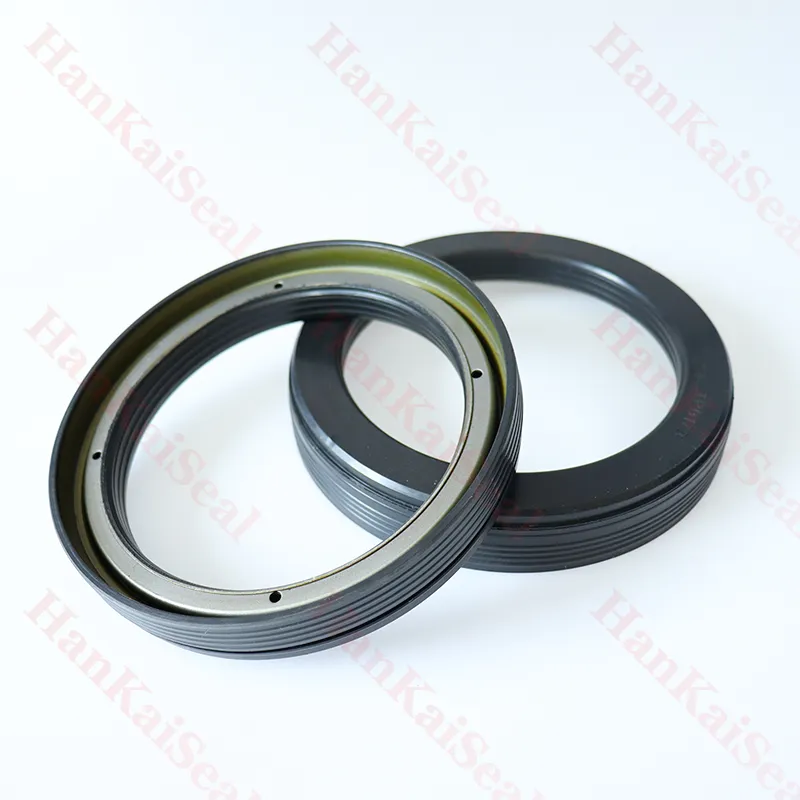دېكابىر . 11, 2024 23:43 Back to list
engine hoist hydraulic cylinder rebuild kit
Rebuilding an Engine Hoist Hydraulic Cylinder A Complete Guide
Engine hoists are essential tools in automotive repair and maintenance, allowing mechanics to lift heavy engines with relative ease. However, over time, the hydraulic cylinders in these hoists can wear down or fail, leading to inefficient performance or complete breakdowns. Fortunately, most hydraulic cylinder problems can be addressed with a rebuild, which often involves using a hydraulic cylinder rebuild kit. Here, we will discuss the importance of rebuilding your engine hoist hydraulic cylinder and provide a step-by-step guide on how to do it.
Understanding the Hydraulic Cylinder
The hydraulic cylinder is the heart of any hydraulic system, converting hydraulic energy into linear mechanical motion. It contains a piston that moves within a cylindrical chamber, driven by hydraulic fluid under pressure. In engine hoists, these cylinders are responsible for lifting and lowering heavy loads, such as engines. Regular usage, combined with exposure to environmental factors such as dirt, moisture, and heat, can lead to wear and tear. Signs that your hydraulic cylinder may need rebuilding include leaks, difficulty lifting loads, or inconsistent height retention.
Why Rebuild Instead of Replace?
While it might be tempting to replace a faulty hydraulic cylinder, rebuilding it often proves to be a more cost-effective solution. Rebuild kits typically include all the necessary components you need to restore the cylinder's functionality, such as seals, O-rings, retaining rings, and sometimes even new pistons. Rebuilding allows you to extend the life of your hoist, minimizes waste, and saves you money, making it an environmentally friendly choice.
Tools and Materials Needed
Before you embark on your hydraulic cylinder rebuild project, gather the following tools and materials
- Hydraulic cylinder rebuild kit specific to your engine hoist model - Wrench set - Screwdrivers - Pliers - Hydraulic fluid - Clean cloths - A container for draining old hydraulic fluid - Safety goggles and gloves
Step-By-Step Rebuilding Process
Step 1 Safety First
Start by ensuring your workspace is safe. Wear safety goggles and gloves, and make sure that the hoist is not under any load. Disconnect the hydraulic lines and drain the fluid into the container.
Step 2 Remove the Hydraulic Cylinder
Using your wrenches, detach the hydraulic cylinder from the hoist
. Pay attention to how various components are connected; taking photos can be helpful for reassembly later.engine hoist hydraulic cylinder rebuild kit

Step 3 Disassemble the Cylinder
Carefully remove all the components of the hydraulic cylinder. This usually involves unscrewing any retaining rings and gently sliding out the piston. Take note of the arrangement of parts as you remove them, which will help in reassembly.
Step 4 Inspect the Components
Inspect the cylinder, piston, and other components for wear, damage, or corrosion. Any severely damaged parts may need replacements beyond the rebuild kit.
Step 5 Clean the Cylinder
Using clean cloths, wipe down the inside and outside of the cylinder. Remove any dirt, debris, or old hydraulic fluid. Ensure that the interior surfaces are smooth and free of any burrs that could interfere with the new seals.
Step 6 Install New Seals and Components
Take the seals and components from your rebuild kit and start installing them according to the instructions that come with the kit. Ensure that all new seals are properly seated, and every component is clean to prevent leaks.
Step 7 Reassemble the Cylinder
With all new parts in place, carefully reassemble the cylinder in the reverse order of disassembly. Make sure to tighten all bolts and screws securely, but avoid overtightening, which can damage the components.
Step 8 Reinstall and Test
Reattach the hydraulic cylinder to the engine hoist, reconnect the hydraulic lines, and fill the system with fresh hydraulic fluid. Test the hoist with a light load to ensure everything is functioning correctly, checking for any leaks.
Conclusion
Rebuilding an engine hoist hydraulic cylinder might seem intimidating, but with the right tools, materials, and a methodical approach, it can be a rewarding DIY project. By following the steps outlined above, you not only save money but also contribute to sustainability by extending the life of your equipment. Regular maintenance and timely rebuilds can ensure your engine hoist remains a reliable partner for all your automotive needs.
-
TCN Oil Seal Metal Ring Reinforcement for Heavy Machinery
NewsJul.25,2025
-
Rotary Lip Seal Spring-Loaded Design for High-Speed Applications
NewsJul.25,2025
-
Hydraulic Cylinder Seals Polyurethane Material for High-Impact Jobs
NewsJul.25,2025
-
High Pressure Oil Seal Polyurethane Coating Wear Resistance
NewsJul.25,2025
-
Dust Proof Seal Double Lip Design for Construction Equipment
NewsJul.25,2025
-
Hub Seal Polyurethane Wear Resistance in Agricultural Vehicles
NewsJul.25,2025
-
The Trans-formative Journey of Wheel Hub Oil Seals
NewsJun.06,2025
Products categories
















